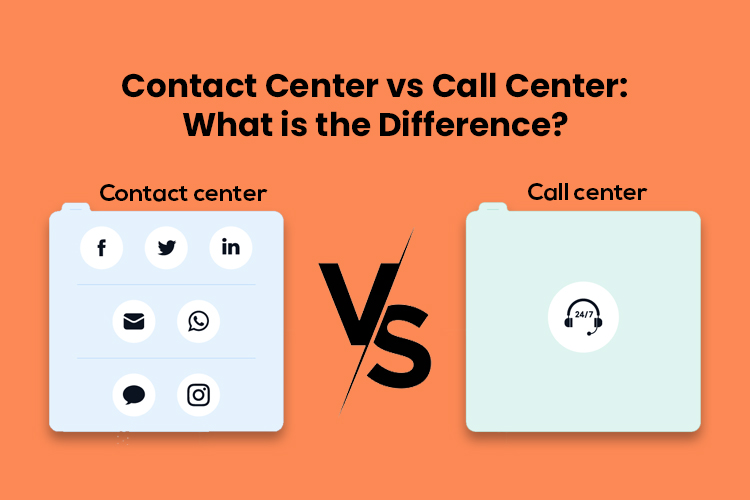Discover How AI is Revolutionizing Journey & CX in Sales & Support
Limited Seats!

Does your business require a contact center or a call center?
Even though the terms “contact center” and “call center” appear to be interchangeable, there are some significant distinctions between the two. Despite the frequent interchangeability of these terms, these prevalent business communication models have some significant distinctions. Building an effective, distinctive customer experience requires starting with a clear understanding of the distinctions between a call center and a contact center and how they relate to your business needs.
In this article, we’ll compare the key distinctions between call centers and contact centers. Additionally, we provide specific justifications for why your call centers ought to transform into omnichannel contact centers and discuss why contact centers are ultimately better for both your business and your clientsWithout further ado, Let’s dive in……….
Customer service specialists who answer incoming and outgoing calls are referred to as “call center agents.” In a traditional call center, customer service representatives answer questions from customers. They may also perform telemarketing, debt collection, billing, and other customer-related tasks. Agents who answer incoming calls assist clients with account questions, appointment requests, technical support issues, complaints, and inquiries about goods and services. Outbound calls, on the other hand, concentrate on telemarketing, fundraising, lead generation, scheduling, client retention, and debt collection. Call centers aim to deliver dependable and prompt customer service via a historically dependable channel—the phone—and can therefore enhance CX. Call center operations may be housed within a company or outsourced to a professional partner.
A contact center is a division in charge of both inbound and outbound customer interactions. Like call center services, contact center operations can be carried out internally or by a partner. However, unlike call centers, contact centers use a variety of channels to interact with customers, including messaging, phone, apps, text, email, social media, and the web. In addition, if you’re wondering what contact center software is, let me clarify that they are very similar in terms of functions but not in terms of integration.
A call center is a common component of contact centers, but they also manage communication via text, email, social media, voice over IP, live chat, and chatbots. With multiple channels, businesses can gather more marketing data and give customers more convenient ways to communicate with them.

SAN Softwares is a company dedicated to providing complete software solutions to Corporate and end-user customers.
